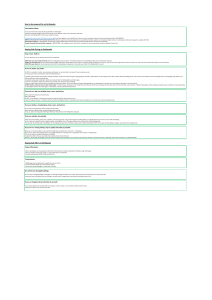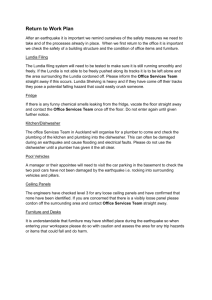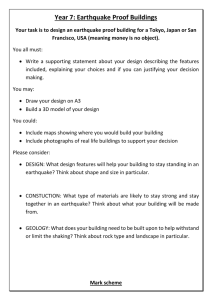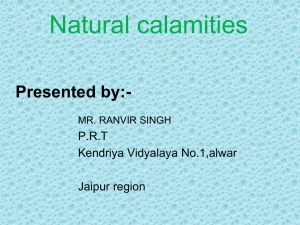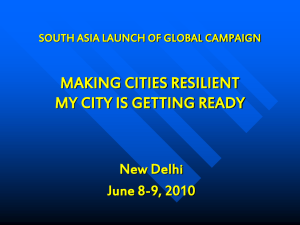Exhibit 12 - Earthquake Procedures
advertisement
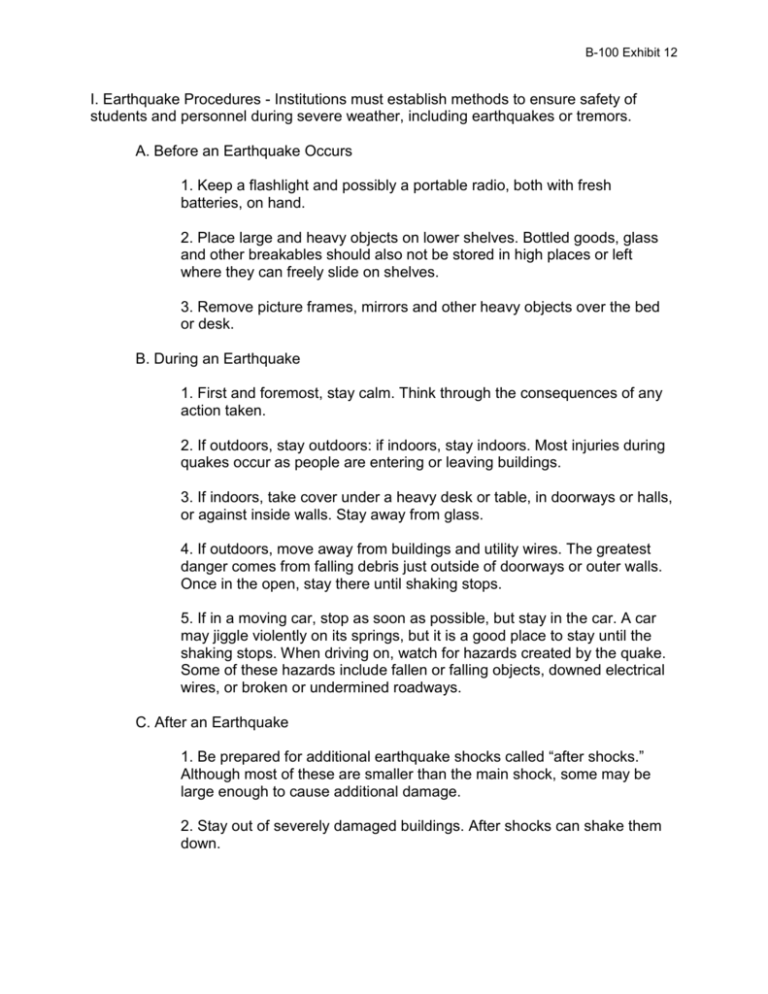
B-100 Exhibit 12 I. Earthquake Procedures - Institutions must establish methods to ensure safety of students and personnel during severe weather, including earthquakes or tremors. A. Before an Earthquake Occurs 1. Keep a flashlight and possibly a portable radio, both with fresh batteries, on hand. 2. Place large and heavy objects on lower shelves. Bottled goods, glass and other breakables should also not be stored in high places or left where they can freely slide on shelves. 3. Remove picture frames, mirrors and other heavy objects over the bed or desk. B. During an Earthquake 1. First and foremost, stay calm. Think through the consequences of any action taken. 2. If outdoors, stay outdoors: if indoors, stay indoors. Most injuries during quakes occur as people are entering or leaving buildings. 3. If indoors, take cover under a heavy desk or table, in doorways or halls, or against inside walls. Stay away from glass. 4. If outdoors, move away from buildings and utility wires. The greatest danger comes from falling debris just outside of doorways or outer walls. Once in the open, stay there until shaking stops. 5. If in a moving car, stop as soon as possible, but stay in the car. A car may jiggle violently on its springs, but it is a good place to stay until the shaking stops. When driving on, watch for hazards created by the quake. Some of these hazards include fallen or falling objects, downed electrical wires, or broken or undermined roadways. C. After an Earthquake 1. Be prepared for additional earthquake shocks called “after shocks.” Although most of these are smaller than the main shock, some may be large enough to cause additional damage. 2. Stay out of severely damaged buildings. After shocks can shake them down. B-100 Exhibit 12 3. Check for injuries. Don’t attempt to move seriously injured persons unless they are in immediate danger of further injury. 4. If water pipes are damaged, shut off the supply at the main valve. Emergency water may be drawn from water heaters, toilet tanks (not bowl) and melted ice. 5. Check to see that sewage lines are intact before using sanitary facilities. 6. If applicable, cut off the gas supply or contact the gas utility company. 7. Report the incident to institutional personnel. 8. Physical Plant will direct the cleanup of debris.




